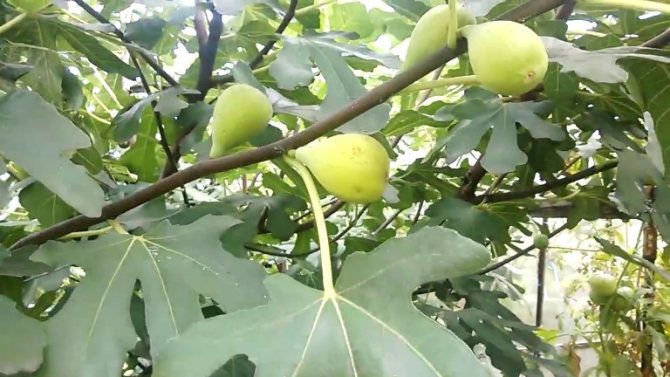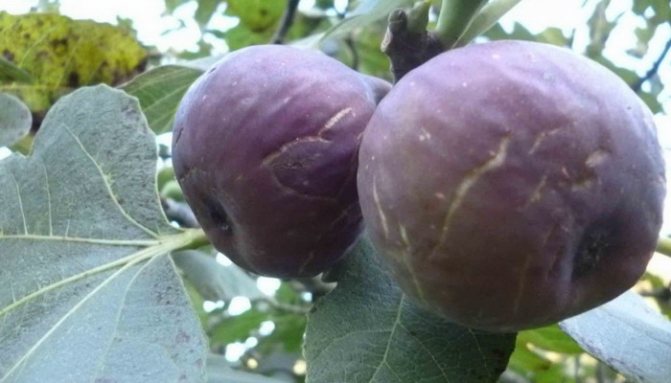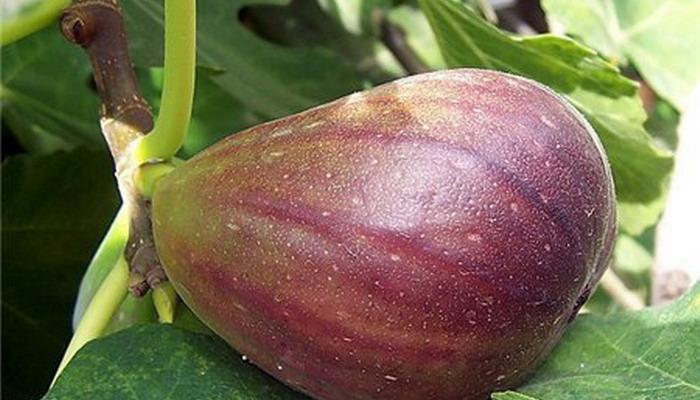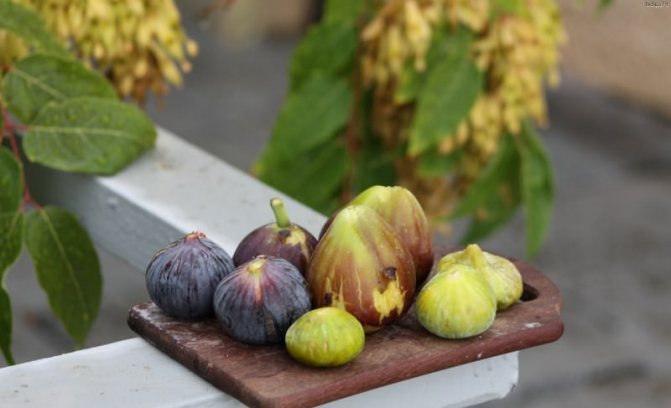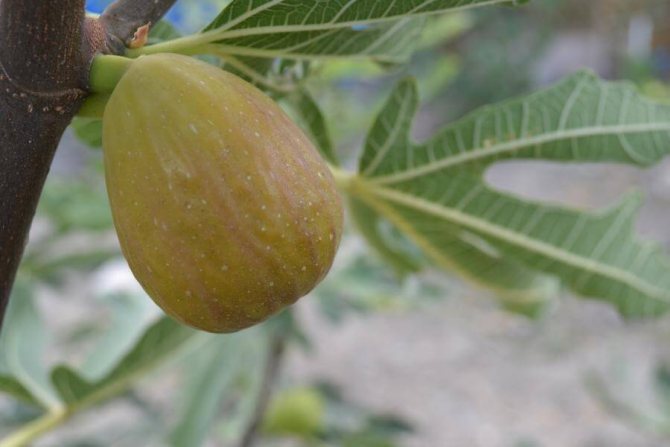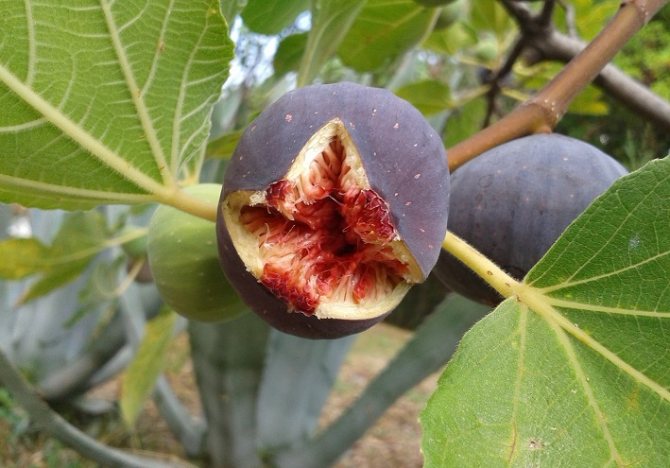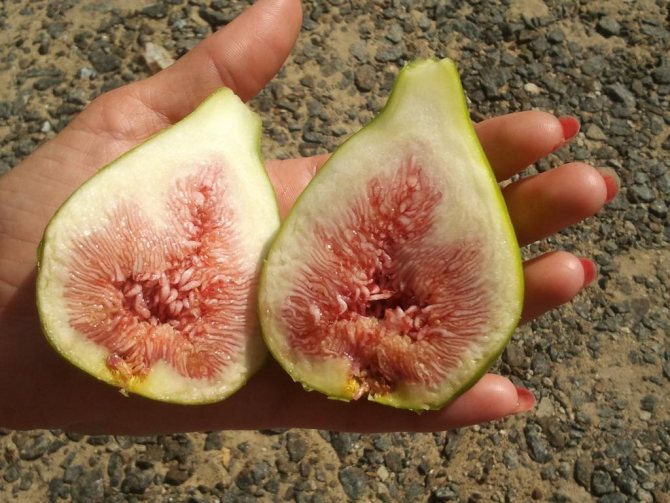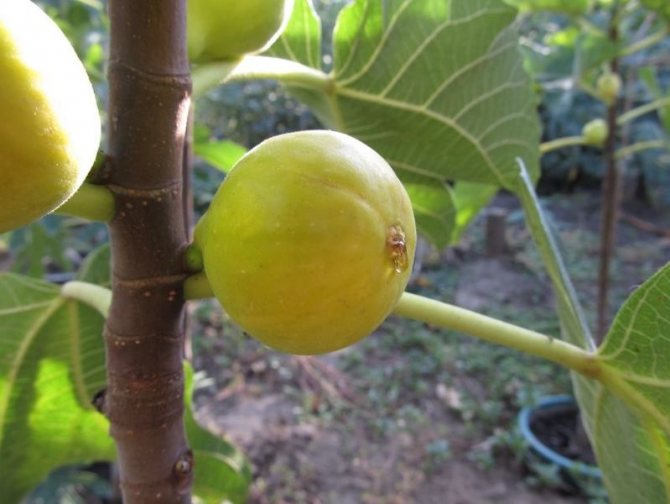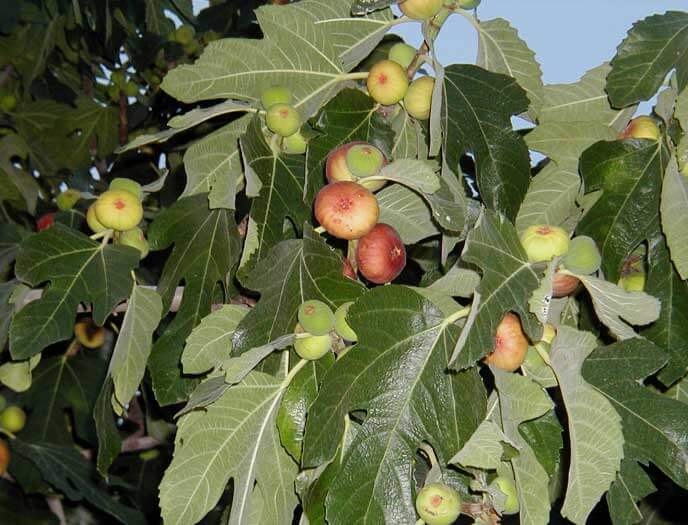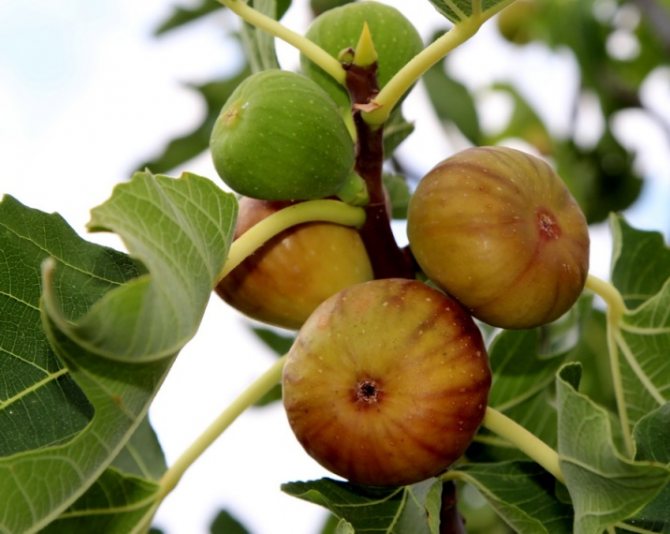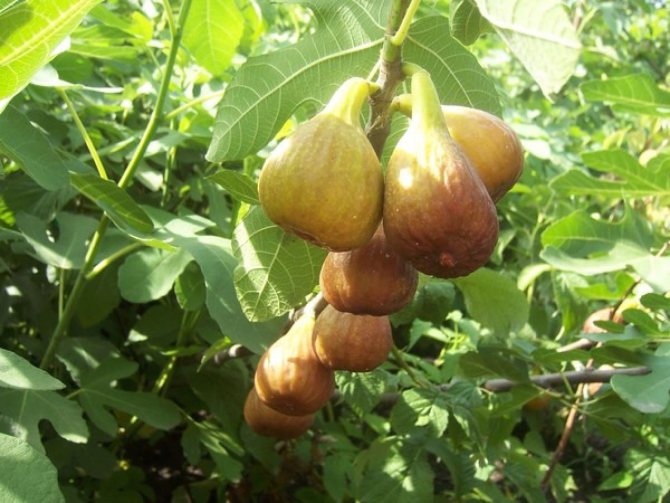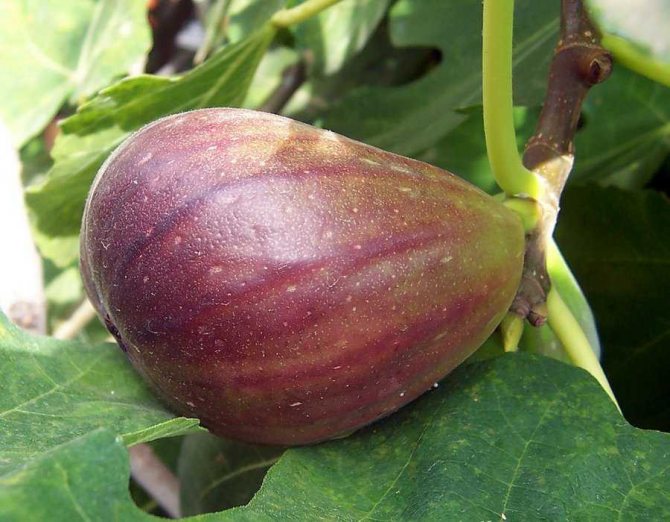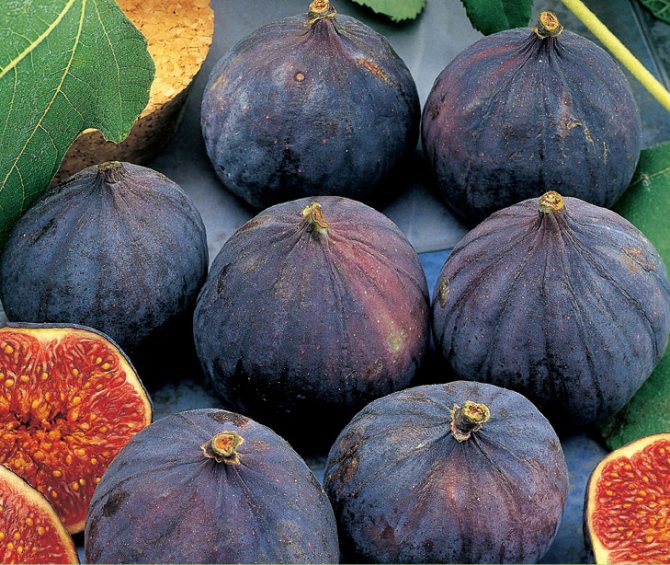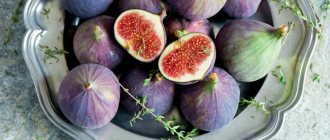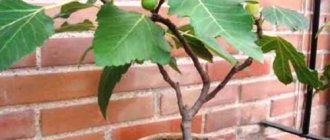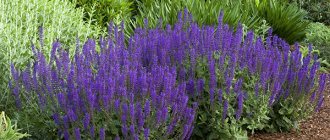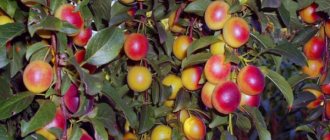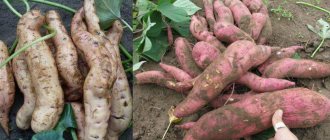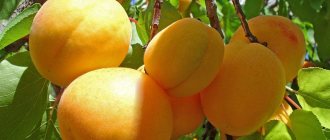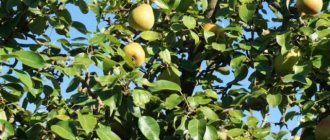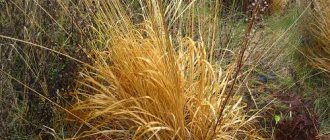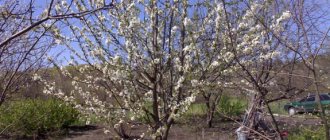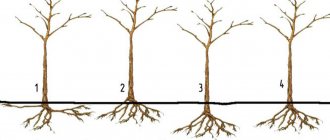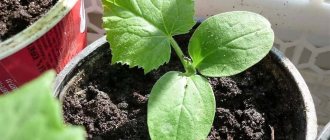
For many centuries, the fig tree was considered a symbol of prosperity, peace and eternal life. More than a thousand varieties of this culture are known. They differ in the taste of fruits, their shape and yield, characteristics of frost and drought resistance, requirements for agricultural technology. Consider those varieties of figs that are most popular among amateur gardeners.
Fig White Adriatic - small, but daring
This variety is common in many countries. It gained popularity thanks to the Nikitsky Garden, which from the 30s to 60s was intensively engaged in its cultivation. He also distributed seedlings and transferred them to various scientific institutions. It is also known as Sochi. Well suited for outdoor cultivation with advanced technology.
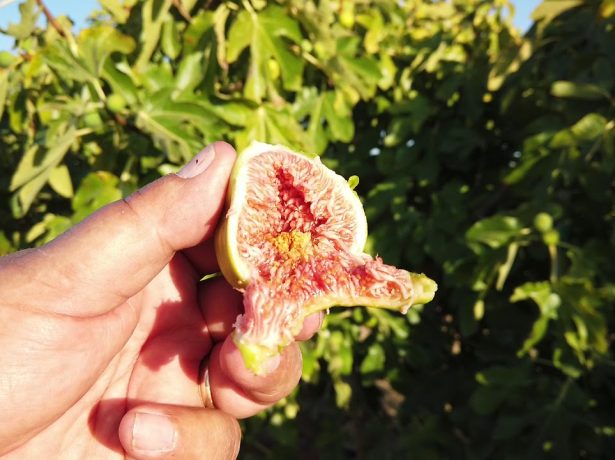

White Adriatic is considered self-fertile and does not require additional pollination.
White Adriatic is considered self-fertile and does not require additional pollination, but if it is available, the quality and quantity of fruits increases. Fruiting - 2 times a year. Fruits are small, up to 60g, oval in shape with a flat top. The pulp is pink, very sweet, the skin of the fruit is yellow-green.
Video: fig variety White adriatic
A feature of this variety is considered resistance to gray rot, good preservation for a long time, and all this is due to the thick skin.
Pink fig tree
Fig variety Sabrucia rosea bears fruit without pollination, is a winter-hardy tree, withstands frosts down to -18 degrees, gives two harvests per season. The first is called winter, because an ovary forms in the fall and, with good shelter, is perfectly preserved until the spring heat. In July, these fruits ripen. And at the very beginning of June, in place of a new increase, a second crop is formed, the fruits of which ripen in September.
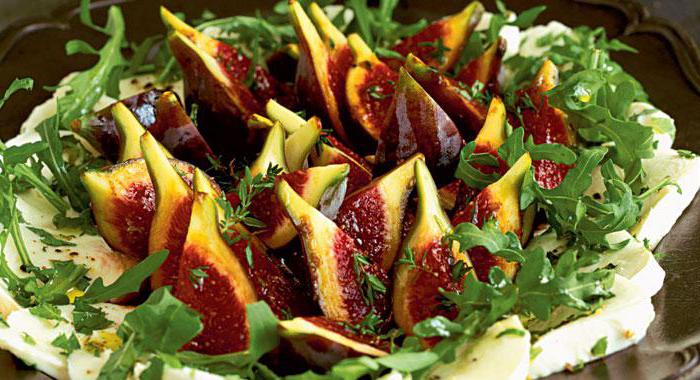

Dalmatian - the best variety for dining purposes
Dalmatian or Turkish white variety. It is one of the best early maturing table varieties. Refers to self-fertile, bears fruit 2 times per season. Its peculiarity is that at the first harvest the fruits reach a very large size - up to 180g. Trees give a rich harvest after three years.
The plant can withstand temperatures ranging from 0 to -15 C. Therefore, Dalmatian figs can be called frost-resistant. The fruits are pear-shaped, the skin is gray-green, the flesh is reddish, juicy, sweet with a slight sourness. In terms of taste, it is considered the best.
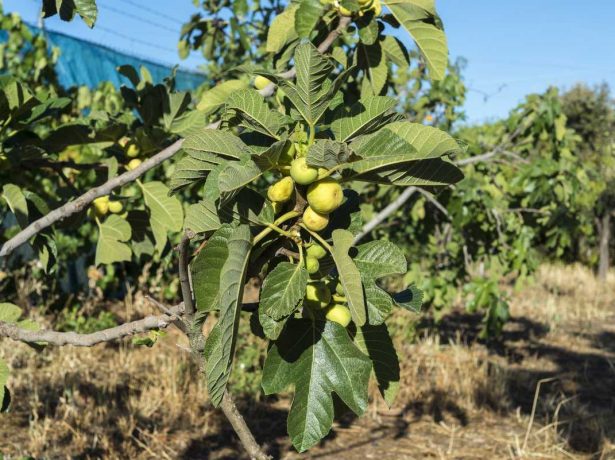

The plant can withstand temperatures ranging from 0 to -15 C
Did you know that among all dried fruits, the first place in fiber content belongs to figs? Therefore, it is recommended for use to normalize the work of the gastrointestinal tract. In addition, this unique fruit contains a lot of potassium, which is beneficial for the heart. And the rich enzyme composition allows you to normalize the functioning of the liver, stomach and kidneys. In terms of iron and calcium content, this amazing fig is also significantly superior to other fruits and is recommended for nutrition in case of iron deficiency anemia and for patients during the recovery period after operations and injuries.
Video: Dalmatian figs
Brief conclusions
- Fig is a fruit crop known to mankind since ancient times.Its homeland was the territory of Asia Minor and the Mediterranean Sea. It is a heat-loving plant that propagates by cuttings or by sowing seeds. For good fruiting, you need to plant it in an area with the addition of lime.
- Today there are more than 1000 varieties of crops. They differ in size and color, shape and flavor characteristics of the crop. The timing of fruit ripening also differs.
- Among all types of culture, it is worth noting the Crimean Black, Dalmatian and Brunswick. San Pedro Black and many other varieties of Fig are also popular. Which one to choose for planting on the site can be determined taking into account the climate of the region and the requirements of a particular variety for growing conditions.
49
Fig Kadota is good for blanks
This self-pollinated variety has gained particular popularity in California. Later it spread to many countries around the world. Refers to self-fertile and early-fertile varieties. The fruits reach a weight of 60g. The shape of the fruit is pear-shaped, slightly rounded, light green in color. The pulp of the fruit is bright pink, juicy, sweet. The variety is excellently transported over long distances.
The fruits tend to dry right on the tree, good for jam, jam and drying.
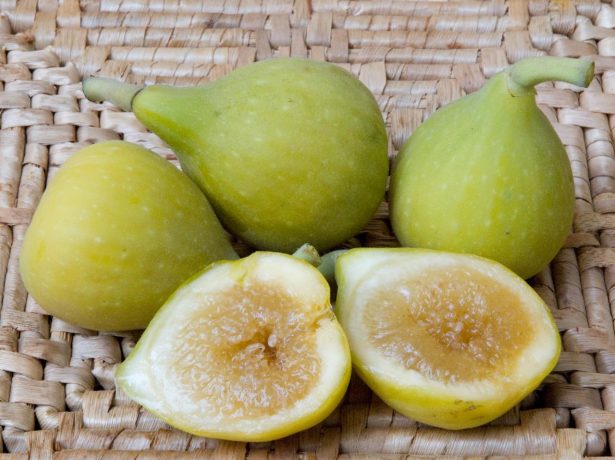

Fruits of the Kadota variety tend to wither right on the tree, good for jam, jam and drying.
Did you know that regular consumption of figs paralyzes the multiplication of cancer cells and promotes retinal regeneration? But it is not recommended to use it for diabetics, patients with metabolic disorders and obesity, because the fruit has a high sugar content.
The sweetest varieties
Sugar Celeste - large-fruited mid-season figs that form tall trees that bear fruit twice a year and are not afraid of cold winters. Very sweet figs in the shape of a pear are covered with a delicate skin that combines yellowish-green and purple hues in color. They are remarkably good fresh, great for drying and any kind of processing. The variety is partially self-fertile.
Strawberry - high-yielding mid-season variety. It forms partially self-fertile, tall and strong trees that tolerate winter cold well. Medium-sized pear-shaped fruits with an exquisite taste of very sweet, aromatic pulp ripen in the second half of August. They have a wide range of uses: from fresh consumption to drying or making preserves, jams, marmalade.
Honey - mid-season, self-fertile and undersized (up to 2 m in height) white figs. The variety forms very productive, spreading and thermophilic trees that are not demanding on the composition of the soil. Light green fruits are distinguished by their extraordinary sweetness, which is clear from the name. This variety can bear fruit without problems indoors.
Crimean black - unpretentious and high-yielding
Scientists of the Nikitsky Botanical Garden distinguish the variety among other samples for its European origin. Refers to early and self-fertile varieties. Crimean black figs yield twice a year. In tree care, it is recommended to pay special attention to pruning and crown formation. The variety responds well to this procedure and gives a high yield annually.
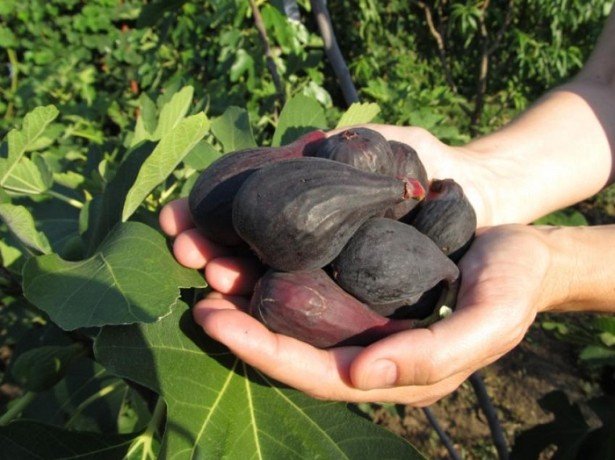

In tree care, it is recommended to pay special attention to pruning and crown formation.
The ripening time is extended. The first harvest is a round, medium-sized fig. The second harvest is characterized by smaller black fruits with a purple tint. The taste of the fruit is sour, which makes the variety unique and in demand. Great for making jam and drying. It is Crimean black that is perfect for planting in open ground cover structures.
Video about Crimean black figs
How to visually enlarge the area: the main rule of perception
Most of the owners of summer cottages at least once in their lives had a desire to make their piece of land bigger. But it is not always possible to buy a few hundred square meters, but to change your favorite vacation spot and buy ...
25 April 2020, 20:10
Figs are fed with organic and mineral fertilizers. Used infusions from manure, top dressing containing potassium, phosphorus. Top dressing is carried out during the growth period from March to October once a month, and also after transplanting the bush into a new container.
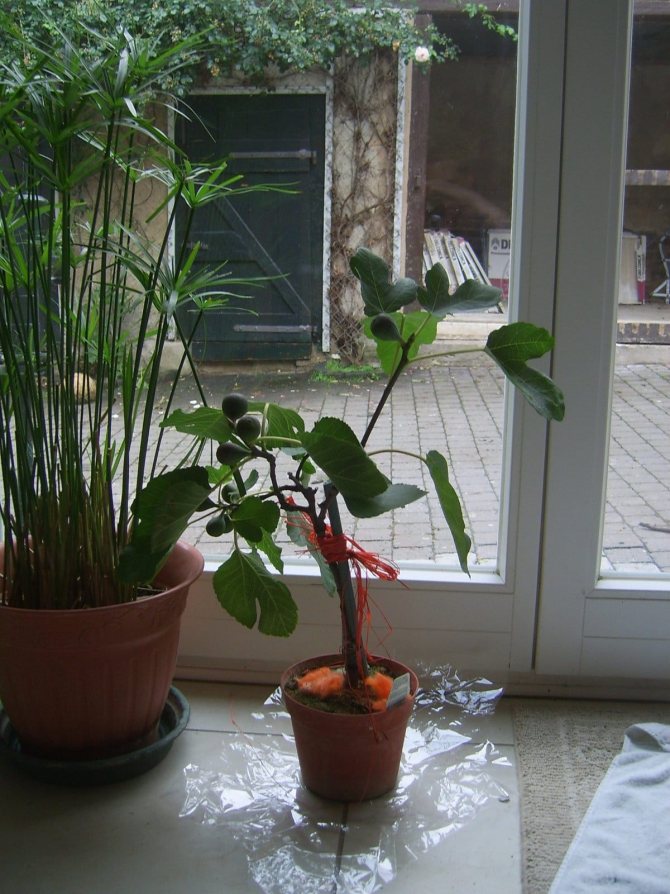

In the spring, the planted rooted cuttings begin to grow. Watering the fig tree in the summer is carried out every 5-7 days. The soil should dry out a little. In autumn, watering is reduced to 20 days. In November, the bush is pruned and left for the winter at a temperature of +15 degrees. If figs are grown in an open area, then for the winter it must be covered with the first frost. After 2 years, the tree will bear its first fruits.
Features of ripening wine berries
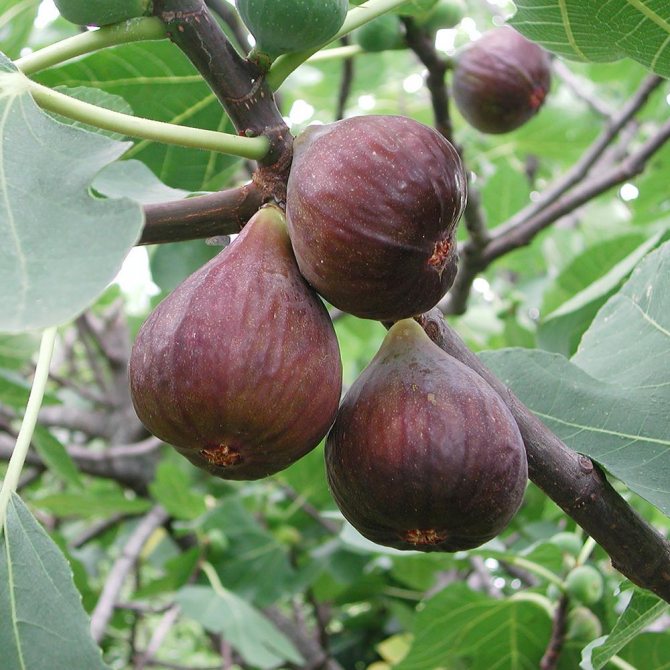

Fig flowers form in the leaf axil and are almost invisible. In their place, small fruits soon appear, which grow in size within 3 months, acquire a rounded shape and turn into a mature color. Figs ripen for a long time, up to 30 days.
Many varieties bear fruit twice a year. But if the plant is grown in cold regions in a greenhouse, then the fruits ripen longer and the variety can only produce one crop due to the short warm season.
If, by the onset of cold weather, the bush begins to give new ovaries, then it is better to remove them, since they will take a long time to form, ripen next spring and delay the summer harvest. This does not affect indoor cultivation, so that in an apartment, subject to all plant care measures, more fruits can be harvested from it.
Diseases of figs and methods of dealing with them
Fig is an unpretentious and persistent tree. It rarely gets sick, but it can still happen. The most common diseases and pests of figs:
Coral spot
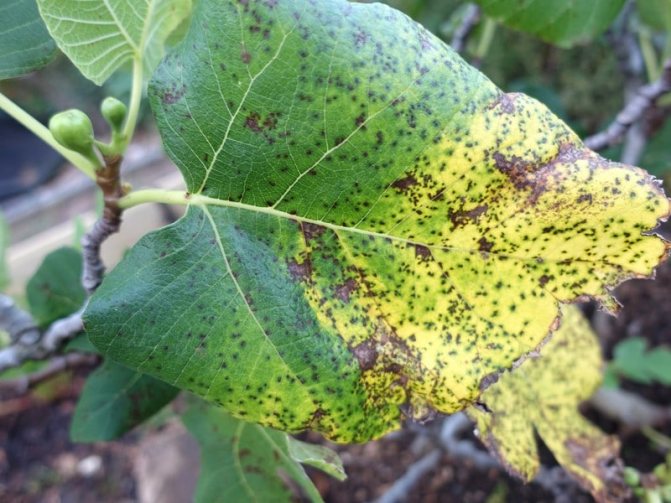

This disease is caused by fungal spores. May occur during prolonged rains. The fungus infects the trunk and gradually spreads to young shoots. Diseased leaves are covered with dry spots. The plant slows down its growth. In this case, the damaged shoots with leaves are cut off, and the soil is fertilized with phosphorus and potassium. In severe cases, the bark of the trunk is covered with growths. Then it will hardly be possible to save the plant.
Gray rot
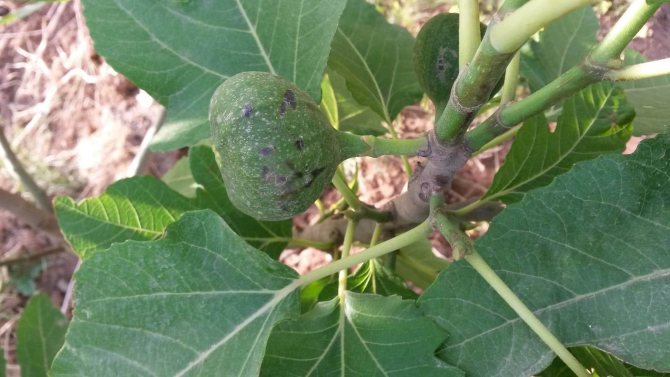

It is also a fungal disease. It occurs when the temperature drops and the humidity is high. The fungus quickly attacks the entire plant. The fruits massively begin to deform and rot. First, a light spot forms on the fruit, which soon begins to mold and expand. Leaves dry from the edges and on the inside are covered with many gray moldy dots. To combat gray rot, special preparations are used, in particular, Actellik. Bordeaux liquid also helps well - a remedy for a wide range of diseases, including gray rot. It is best to spray the tree in the fall, as this fungicide is toxic to the fruit.
Anthracnose
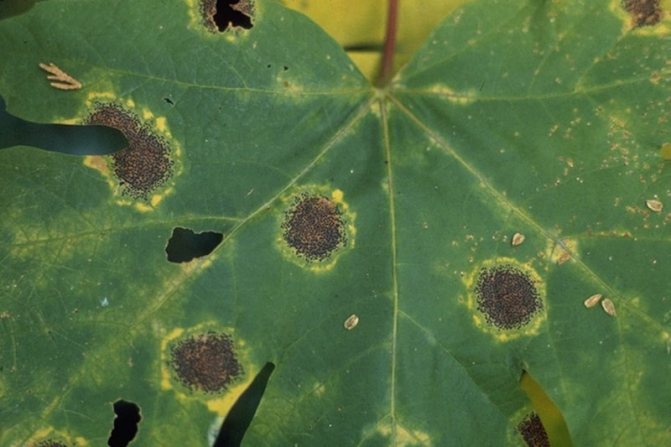

The disease is spread in the summer by a fungal pathogen. With anthracnose, fig leaves are covered with black round spots with a yellow rim. Fruit growth slows down, lumpy growths form on them. Ulcers appear on the shoots, the tree dries up everywhere. To prevent anthracnose, the plant is treated with Topsin-M in the spring. In the summertime, the already affected tree is sprayed with the bactericidal preparation Gamair. This helps to contain the growth of the fungus. The drugs Fundazol, Previkur, Ridomil are also used.
Fig Brunsvik - the most frost-resistant
This variety is also called Chapla or Buzoy Burnu. Refers to self-fertile. The first crop produces few fruits.But they are large, reaching two hundred grams. The second harvest pleases with a large number of smaller figs. The fruits are light green in color with a crimson core. The variety has established itself with excellent taste and frost resistance up to - 28 ° С.
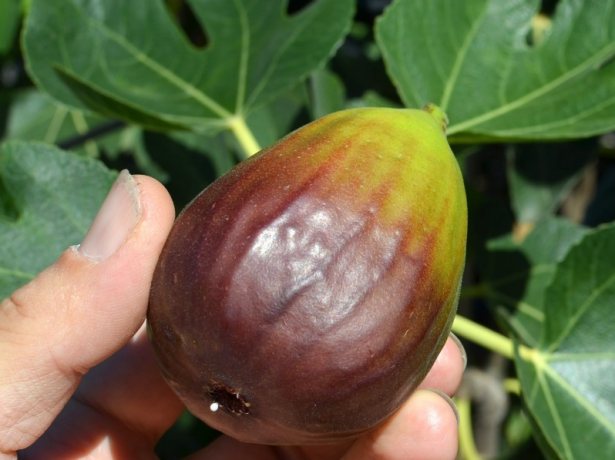

Figs Brunswick are popular around the world
Sometimes in markets and fruit shops you may be offered to buy royal figs. As such, there is no variety in the register. Most often, this is the name for large-sized fruits with a dark blue or purple color of the peel. Such a name is not a certificate of the variety, but an indicator of quality.

